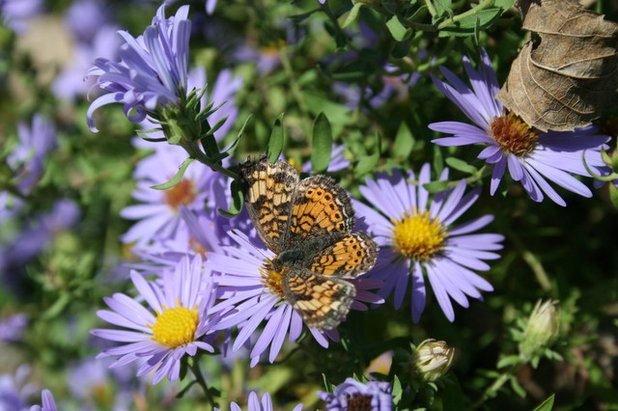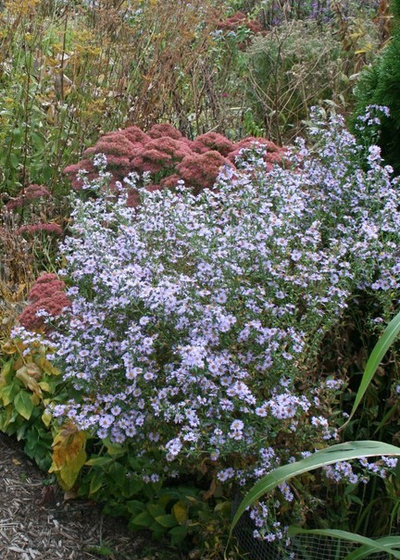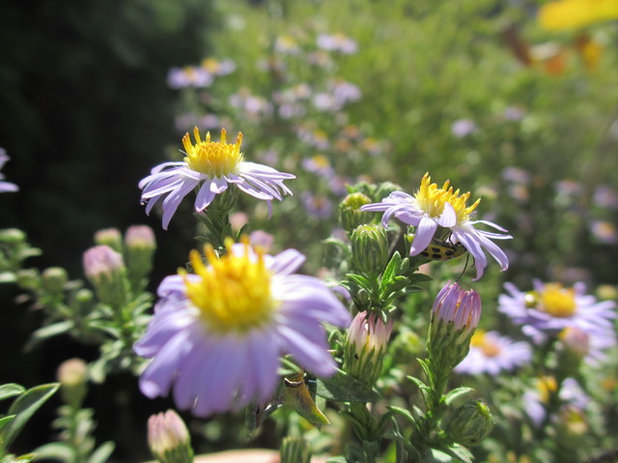There are very few plants in my native garden that go above and beyond the wildlife value of smooth aster. In fall many insects are migrating or getting ready to slumber, so are storing up on nectar and pollen. When I walk by smooth aster and slowly move my arm a few feet above the plant, hundreds of insects lift like an inverted snowfall. All kinds of hungry bees, moths, flies, beetles and butterflies emerge into the air in a confetti storm. Try this aster. You won’t be disappointed.

Benjamin Vogt / Monarch Gardens
Botanical name: Symphyotrichum laeveCommon name: Smooth aster
Origin: U.S. native to the mountain West, northern Plains and Midwest, and scattered throughout the eastern U.S.
Where it will grow: Hardy to -30 degrees Fahrenheit (USDA zones 4 to 8; find your zone); best planted if native to your area
Water requirement: Slightly moist to slightly dry soil
Light requirement: Full sun to partial sun
Mature size: 2 to 4 feet tall and 1 foot to 2 feet wide
Benefits and tolerances: Very low maintenance; superb pollinator plant
Seasonal interest: Great midfall bloom over about two weeks
When to plant: Spring to fall; seed in fall or winter

Benjamin Vogt / Monarch Gardens
Distinguishing traits. Smooth aster takes about two to three years from seed to reach its full potential, but when it does, it’s incredible. The stems and leaves are hairless, unlike most other asters, hence the common name.
How to use it. Perfect for medium soils in full sun, en masse or as a specimen. In borders it may be best in the middle. Smooth aster makes a great fall accent.

Benjamin Vogt / Monarch Gardens
Planting notes. Smooth aster is pretty tough, and very little bothers it. I have one in dry clay, one in medium clay and one in occasionally moist clay, and they all are doing well. It’s also easy to start it from seed in overwintering pots or outdoor seed beds.





